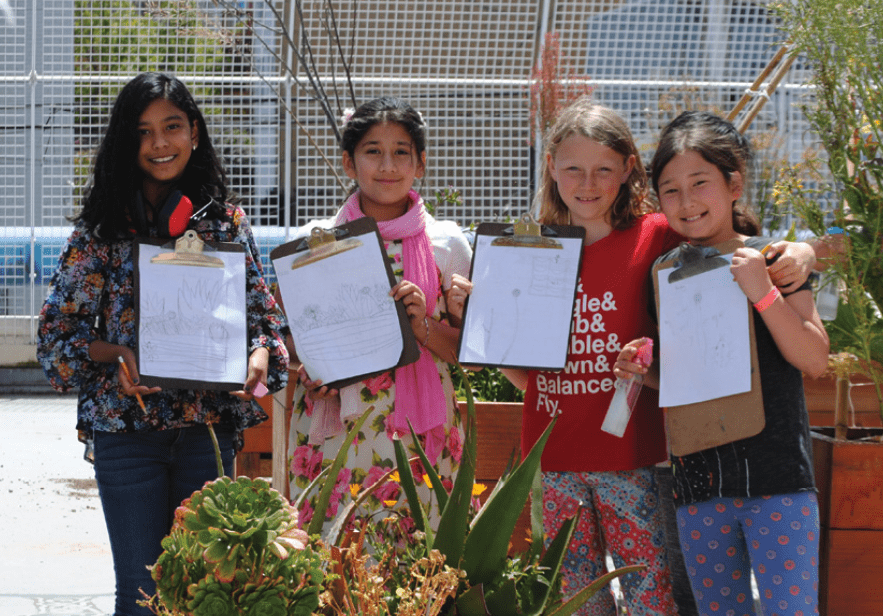In Part Two of our series highlighting the California Regional Environment Education Community (CREEC) Network Program, we’ll focus on the CREEC Central hub.
Tamara Basepayne is currently helping to lead the CREEC Central Hub. She is the Director of STEM and Outdoor Education for the San Joaquin County Office of Education (SJCOE) and has 14 years of experience as an educator. Previously, she worked for 12 years as a high school life science and career technical education teacher. During this time, she developed, implemented, and coordinated a health science academy. She started at the SJCOE as a science coordinator for two years and provided professional learning for K–12 science teachers and leaders in the county. In her current position, she collaboratively manages outdoor education and environmental literacy throughout San Joaquin County and beyond.
How did you become interested in advancing student environmental literacy?
I began my career in education as a high school science educator for 12 years before working as the STEM coordinator of outdoor education and environmental literacy for the San Joaquin County Office of Education (SJCOE). I am passionate about environmental literacy because I have kids of my own, and I want them to have a world to inherit when we leave.
There is a lack of environmental education for K-6 students. I want to ensure that students not only understand the importance of this planet and their connection to it but also know that they can positively impact it.
What environmental education initiatives has your region been focused on recently?
To help implement environmental literacy in the 14 school districts in San Joaquin County, we’ve created several networks that bring together different people within those districts. For example, we created a Youth Network for high school students, a Teacher Network for administrators and district-level educators, and a Community-Based Partner Network. Lastly, we facilitate a network called Green Engagement Leaders, composed of SJCOE employees working to make our organization more green and sustainable in our practices and policies. We hope to unite and support all the different parties involved in transforming these school districts.
We support the implementation of environmental literacy in these school districts by helping fold these concepts into all subjects, not just science. For example, our language and literacy department is hosting a summer school program for students in our migrant education program. Within that program, we provide language development services to encourage educational opportunities that empower migrant students and their families. By focusing on language development through the lens of environmental literacy, we build both their language skills and environmental literacy.
How do community hubs between the county offices of education, schools, teachers, and community partners influence the education environment at schools? How does it impact the student experience?
County Offices of Education are meant to support the districts within their county. However, often teachers and districts aren’t aware of the resources their local COE offers. The SJCOE can connect educators with the resources and community-based partners that best suit their needs.
Teachers and districts don’t always have the capacity or time in their schedules to host things like a community-partner network. The County Office of Education has the capacity to connect them with valuable resources, professional development, and community-based partners that can provide meaningful learning experiences for students.
Those connections are important for students because community partners bring relevant real-world learning to students, especially when they introduce green careers and jobs that work on fostering ecological sustainability.
How will the grant from the CREEC Network help develop key partnerships in your region?
The central CREEC region covers 19 counties across central California, from Amador County in our foothills down to Ventura County. We created a community of practice model to support this massive region using our resources through the CREEC Network.
We have selected one or two leaders to represent each of the County Offices of Education in this region. These COE leaders called for applications from teachers in their respective districts dedicated to environmental literacy for their students.
We convened everybody to discuss what assets we could bring to the table and identify community-based partners. Notably, we invited an organization called Spark In Nature to present the social-emotional advantages of nature journaling and how educators can implement it with their students. We also asked the Biomimicry Institute to present its work and benefits for schools.
You are also using the grant to fund educational programming around environmental education implementation. Can you describe that?
To follow up on the work we are doing in this region, we are hosting a Summer Institute that offers a deep dive into implementing environmental education. By the end of the program, we will develop plans for how educators can implement some of the things they’ve learned in the past year and devise action plans according to their capacity. Year two will continue building on their action plans and leadership development.
You’ve also been working to assist your school districts to become eligible for recognition by the U.S. Department of Education as certified Green Ribbon Schools. Can you share a bit about that program?
The prestigious Green Ribbon Schools initiative motivates schools, districts, and higher education institutions to reduce their environmental impact, improve the health and wellness of their staff and students, and provide environmental education that focuses on sustainability.
To assist schools in becoming eligible for this recognition, we hosted a series of four webinars to help schools understand how to qualify and provide them with technical assistance. We also formed a Green Ribbon Schools working group to provide guidance and assist schools with submitting their applications. Our goal is for a few of our districts to apply this year!
Looking ahead, what initiatives will you be working on in the next couple of years?
California recently enacted SB 1383, which is intended to reduce organic waste disposal by 75% by 2025. Now the state is amid the country’s largest rollout of residential and commercial organic waste recycling.
While we’re excited about this work, the mandate is a little worrying as it doesn’t allocate funding to schools to implement any systems that would assist in organic waste recycling or provide resources to train students on how to dispose of their food waste when leaving the cafeteria. We sent out surveys and have had conversations about how we can create the infrastructure within our school districts to help increase their capacity to recycle organic waste. Now we are working with our operations team and the Greater Valley Conservation Corps to create student programming to help school districts reduce their organic waste.







